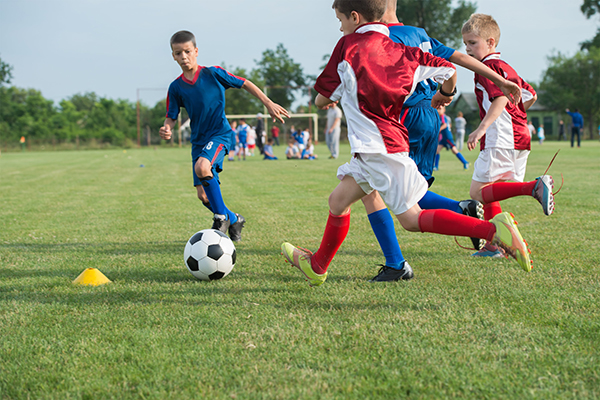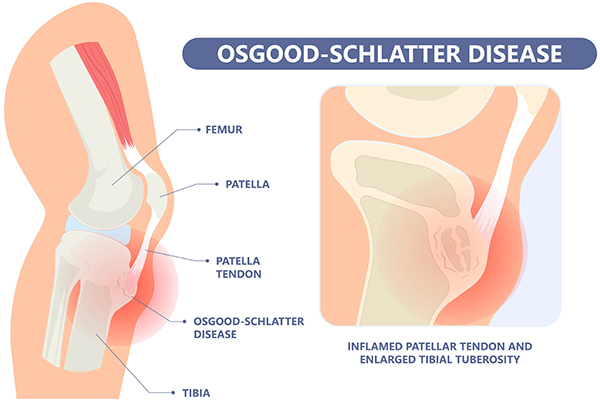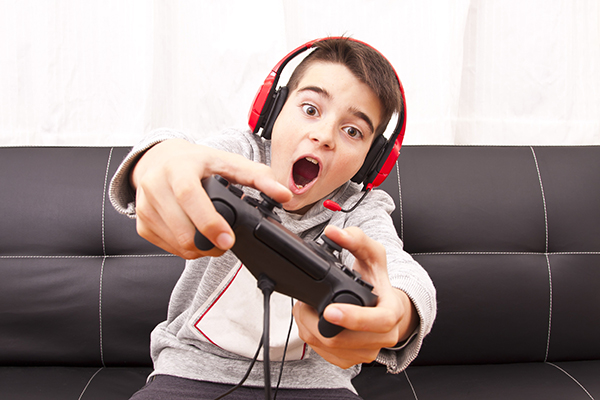Project Description
Children and Adolescent (Paediatric) Physiotherapy Service (under 16’s)
Children and Adolescent (Paediatric) Physiotherapy Service (under 16’s).
At Complete Physio we have a dedicated team of physiotherapists to treat children and adolescents with sporting injuries. Not all physiotherapists have the necessary training, experience and knowledge to treat children. Children are not just miniature adults. Obtaining a correct diagnosis is essential to implement a treatment plan to reduce time off sport and to ensure a full and safe recovery for your child.
Specialists in their field
At Complete, our specialist physiotherapists are members of the Association of Paediatric Chartered Physiotherapists (APCP) and have the necessary skills, knowledge and experience to treat your child. The diagnoses and management of sports injuries in children and adolescents is quite different to managing adult injuries. Our specialist team of physios will adapt their assessment and treatment to the needs of the child and will keep them informed, engaged and motivated throughout the process.

Our team have vast experience of treating children and have worked in a variety of settings including the NHS, schools, private practice and professional and elite sports teams. These include Tottenham Hotspur FC, Great Britain Gymnastics, British Athletics and Harrow School to name just a few.
Common conditions that we treat at Complete:
1. Back and neck pain
- Poor posture related pain
- Lower back (lumbar spine) pain such as a pars defects and/or spondylolisthesis or a disc problem
- Scheuermann’s disease of the middle back (thoracic spine).
- Scoliosis
2. Hip and pelvis pain
- Perthes disease
- Slipped upper femoral epiphysis (SUFE), also known as a slipped capital femoral epiphysis (SCFE)
- Apophysitis and Avulsions
- Developmental Dysplasia of the Hip
- Stress fractures
- Juvenile Septic Arthritis
3. Knee pain
- Anterior knee pain due to traction apophysitis such as Osgood-Schlatter’s disease, Sinding-Larsen-Johansson syndrome
- Patella tendinopathy
- Patellofemoral (‘maltracking of the knee cap’) joint pain
4. Ankle and foot pain
- Ankle sprains
- Achilles tendinopathy
- Sever’s disease
- Flat feet
5. Shoulder pain
- Rotator cuff pain or tears
- Bursitis
6. Post operative rehabilitation
Physiotherapy following surgery such as:
- Knee ligament/ACL reconstruction
- Ankle ligament surgery
- Post fracture
- Post dislocation

Children are not just miniature adults
Children are not just miniature adults and the same injury in an adult maybe treated differently in a child. Their immature skeleton is still growing and this predisposes them to different injuries, which can significantly alter their management. Until the skeleton is fully matured, the muscles, bones and soft tissues differ to those in adults. Full maturation occurs when then the growth plates in the long bones fuse. The exact age does vary, but is approximately 21 for males and 18 for females.
Causes of injuries in children and adolescents
Excessive sport – ‘overuse’
The majority of injuries are caused by an excessive amount of sport at school, what we would call overuse or over activity injuries. Alternatively, it could be due to carrying a heavy bag at school or an injury following a specific incident, such as a fall or bad tackle.
Sedentary behaviour – ‘underuse’
Injury can also be due to more sedentary behaviours, i.e. underuse, which is becoming more common in children. Examples would include sitting too much at school or playing on computer games. Excessive sitting whilst ‘gaming’ can cause neck and back pain and/or ‘Gamer’s thumb’!

Good news
The good news is that children do often heal quicker than adults, particularly if the injury is correctly diagnosed and managed at the beginning.
If a child is experiencing pain, an early, prompt diagnosis is essential.
‘Growing pains’
Many children and adolescent injuries are classified incorrectly as simple ‘growing pains’. As a result rest is often the prescribed treatment, which is often not the optimal treatment. Although pain does occur due to growth spurts, ‘growing pains’ is not an adequate ‘diagnosis’ and is often due to the lack of knowledge of the clinician. It also implies little can be done to help.
This is not the case and identifying a specific and accurate diagnosis will allow the clinician to identify what conditions are simple ‘growing pains’ and what requires more attention.
Rest is often not the optimal treatment. Activity modification is often required but very few adolescent injuries require complete rest. It is essential we do not stop adolescents doing what they love doing e.g. playing football or rugby, participating in gymnastics at school or running cross country, unless absolutely necessary.
There are certain injuries that must not be missed in children and adolescents such as avulsion injuries and some hip conditions such as Perthes Disease. These presentations may require complete rest away from all sports for a period of time. Such conditions will require diagnostic imaging such as an X-ray to confirm the diagnosis, making it essential that your child is treated by a specialist physio who works as part of a wider medical team.
A team of experts
At Complete we work as part of a multi-disciplinary team (MDT) including sports doctors, GP’s, orthopaedic surgeons, strength and conditioning coaches, clinical Pilates specialists and soft tissue therapists. We will also liaise with schools, coaches and consultants or GPs when necessary.
Consent
At the first session a parent or guardian must accompany the child and ideally this continues for subsequent visits. However, if this is not possible, written consent from a parent or guardian is required.
What ages do we treat?
We currently have physiotherapists who treat children over the age of 8. Please note this service is not available at all clinics. Also, not all of our specialists treat children from the age of 8. Please see the meet the team section below to identify the correct physio and clinic location for your child. Treating children requires a specialist paediatric physiotherapist who has the necessary skills, training and experience for your child’s age and condition.
What conditions do we not treat?
We do not treat conditions such as cerebral palsy, cystic fibrosis, brain injury and spina bifida.
To make an appointment please call 020 7482 3875 or if you would like to discuss an injury before booking email info@complete-physio.co.uk.
Meet our Team
Injuries in children and adolescents
These are certain factors to be taken into account when managing children and adolescents:
Open growth plates

To allow the growth of long bones, children and adolescents have growing zones in their bones, commonly known as growth plates. There are three main types of injuries which can occur at the growth plates: apophysitis, avulsions and fractures.
Apophysitis refers to an inflammation of the growth plate, which occurs with repetitive traction on the growth plate by a tendon attachment. An example of this is the Achilles tendon attachment tractioning on the heel bone (known as Sever’s disease). The speed of bone growth varies depending on the area of the body and the age of the child, meaning that different problems are more common at particular ages. For example, problems around the heel (Sever’s disease) are more likely to occur aged 7-12, while problems around the knee (Osgood-Schlatter’s disease and Sinding-Larsen-Johansson syndrome) are more likely to occur aged 10-14.

Due to differing times of peak growth between boys and girls the time of onset can vary between genders as well. These conditions are generally self limiting, but can be very disabling whilst they are active and there are many treatment strategies that can be employed to minimise the symptoms.
Avulsion injuries are when a ligament or tendon pulls off the chunk of bone it is attached to rather than itself tearing. These injuries are more common in children than adults as their soft tissue structures are stronger than their bones, whereas in adults the ligament or tendon is more likely to be injured. These injuries can often be managed without any surgical intervention, but it is important to diagnose them early to obtain the best results.
Whilst fractures in children and adolescents generally heal more rapidly than in adults, a fracture across a growth plate needs to be managed differently. This is because if there is damage to a growth plate, this can cause growth arrest in the damaged area, which can lead to limb length discrepancy or bowing of the bone. If a fracture does occur through a growth plate, it is important that your child is referred to an orthopaedic surgeon who specialises in paediatrics.
Specialising in Sports
Today, children and adolescents tend to ‘specialise’ in a sport at a much earlier age, particularly if a specific talent has been identified. This early specialisation means that they are often doing the same repetitive movement at a higher intensity, which can lead to asymmetries or unwanted compensations. For example, those children who pitch baseball at a high volume are more likely to develop increased external rotation and decreased internal rotation in their throwing arm due to humeral torsion, while high level adolescent football players are much more likely to have a CAM lesion in their hip.
Paediatric conditions
There are particular conditions which only occur in children and adolescents and, whilst rare, it is important that they are not missed when they present to the clinic as their prompt treatment is very important for long term health and function. Such conditions include:
- Perthes disease
- Slipped Capital Femoral Epiphysis
- Septic Arthritis

X – ray showing a Slipped Capital Femoral Epiphysis – also known as SCFE.
Congenital conditions
Congenital conditions refer to conditions which were present at birth, having developed in utero. These conditions are generally diagnosed at or soon after birth, but in children born in countries without widespread screening processes, or mild forms of the condition, these issues may only become apparent as the child increases their activity levels.
Developmental Dysplasia of the Hip
This refers to when the hip socket (acetabulum) is more shallow than usual at birth, causing the hip joint to be less stable than average. In the UK, this condition is screened for at birth and most cases are detected and managed very early with excellent results. However, if the condition is not detected, it can manifest as pain and discomfort in the hip as the child starts to increase their sporting activities.
Flat foot
This is generally a harmless condition. Many of the world’s greatest athletes have what we would diagnose as ‘flat feet’! Whilst some people might be concerned from a cosmetic perspective, unless there is pain or dysfunction associated with flat feet, no treatment is required.
To book an appointment with one of our specialists call 020 7482 3875, or if you would like to discuss an injury before booking, please email info@complete-physio.co.uk

